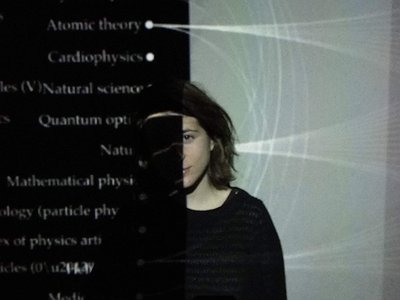Part 1
Name: Laura León
Nationality: Spanish
Occupation: Musician / Visual artist
Current Release: Percepciones de un Silencio on Phantom Limb
Recommendation: Max Eastley/David Toop: New and Rediscovered Musical Instruments (1975)
/Nan Goldin: The Ballad of Sexual Dependency (1985)
Website / Contact: If you enjoyed this interview with Laura León, visit www.facebook.com/percepcionesdeunsilencio/
When did you start composing film music - and what or who were your early passions and influences? What is about music and/or sound that drew you to it?
I started playing guitar at the age of 15, at that time my influences were especially those of the independent Manchester scene, I used to listen to bands like The Smiths, Joy Division or The Stone Roses. In those days, I simply admired the virtuosity of Johnny Marr or Greenwood. However, I did not begin to consider composition until 16-17, when I discovered Explosions In the Sky. In particular I was fascinated by the figure of Munaf Rayani, he did not seem brilliant technically, but he played and composed with a sensitivity that made me think maybe I could also try to write something like that. To date, I'm still technically mediocre, but I think I prioritized the sensitive side of the composition, which today is what I think is paramount.
For most artists, originality is first preceded by a phase of learning and, often, emulating others. What was this like for you? How would you describe your own development as an artist and the transition towards your own voice? What is the the relationship between copying, learning and your own creativity?
In the end our creativity is based on the imaginary that we shape over the years. Personally, my tastes have diversified over time, which has greatly enriched my way of conceiving the music and resources that I have. I am continually exposed to people with different tastes to mine, which make the influences grow even bigger.
What were your main compositional challenges when starting out as a film composer and how have they changed over time?
The challenges evolved until I stopped worrying merely about the melodic part and become interested in the general conception of the transmission, the surroundings, the textures... In addition to this, I gradually acquired guitar pedals and I’ve been using various objects to play and trying to explore new sounds.
What, to you, are the main functions and goals of soundtracks and film music and how would you rate their importance for the movie as a whole? How do you maintain a balance between, on the one hand, artistic integrity and sticking to your creative convictions and, on the other, meeting the expectations of the director?
Both, soundtrack and sound design are paramount when it comes to accompanying the image; the tolerance of the spectator with the audio tends to be lower than with respect to a deficient image. That is why it is so important to reach an average between production requirements and our stylistic and author traits.
What was your first studio like? How and for what reasons has your set-up evolved over the years and what are currently some of the most important pieces of gear for you?
Although I am not accustomed to recording, I find the fact of being able to preview an idea very helpful. To do this I simply count on the use of several DAWS like Ableton or Pro Tools, a sound card, a condenser microphone, a MIDI controller and some basic notions of mixing.
How do you make use of technology? In terms of the feedback mechanism between technology and creativity, what do humans excel at, what do machines excel at?
Technology gives us the tools we need to work creatively. It opens up the possibilities of what we can do and often lowers the costs. However, the technology still needs, and will continue to require, a creator who gives shape to everything, contributes with her perspective and humanizes the track.
Production tools, from instruments to complex software environments, contribute to the compositional process. How does this manifest itself in your work? Can you describe the co-authorship between yourself and your tools?
I usually work by establishing a base and creating many loops, trying different things until I get different ideas that end up being parts or movements of the tracks. If I want to make a more closed structure, I record it with Pro Tools.
Collaborations can take on many forms. What role do they play in your approach and what are your preferred ways of engaging with other creatives through, for example, file sharing, jamming or just talking about ideas?
This project is perfect to talk about the concept of collaboration, because it is based on translating different perceptions on the same basis. It is the purest way that can exist to share ideas that coexist in the same whole. Untouchable ideas but conscious of the existence of other possibilities. For all of us, it is enriching to see new perspectives. All the people who have participated are people whose work I admire and follow, that is why for me, it’s especially satisfactory to exert myself as an axis, putting the base of the project in its graphic section, to see how the trajectory of these artists were affected by my influence.





